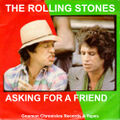January 15
GNOMON CHRONICLES
On This Day in History and Fiction: January 15
1623: Statesman, scientist, and historian Paolo Sarpi dies. He was a proponent of the Copernican system, a friend and patron of Galileo Galilei, and a keen follower of the latest research on anatomy, astronomy, and ballistics at the University of Padua.
1818: A paper by British physicist David Brewster is read to the Royal Society, belatedly announcing his discovery of what we now call the biaxial class of doubly-refracting crystals.
1850: Mathematician and physicist Sofia Kovalevskaya born. Kovalevskaya will contribute to analysis, partial differential equations, and mechanics.
1896: Photographer and journalist Mathew Brady dies. He was one of the first American photographers, best known for his scenes of the Civil War.
1905: Physicist and academic John D. Strong born. Strong will contribute to optical physics: he will be the first to detect water vapor in the atmosphere of Venus, and he will develop optical devices and materials including improved telescope mirrors and anti-reflective coatings.
1908: Theoretical physicist and academic Edward Teller born. He will be known colloquially as "the father of the hydrogen bomb", although he will not care for the epithet.
1945: Mathematician Wilhelm Wirtinger dies. He contributed to complex analysis, geometry, algebra, number theory, Lie groups and knot theory.
1981: English rock band the Rolling Stones performs an early version of their song "Asking for a Friend".
2006: A capsule of dust samples collected by the spacecraft Stardust returns to Earth.








